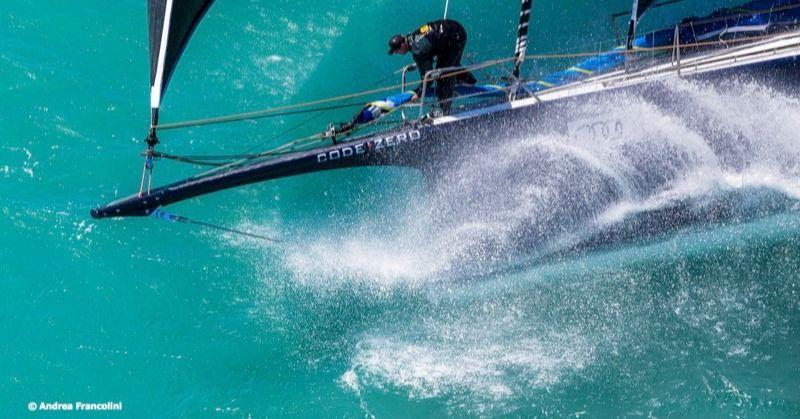
KZ Racefurlers - Performance Code Zero Furlers
by Phil Anniss 28 Jan 2023 12:00 UTC

KZ Racefurlers - Performance Code Zero Furlers © Andrea Francolini
We are pleased to introduce KZ Racefurlers to the upffront.com website. Racing sailors will need little introduction, as KZ have been gracing the bows of grand prix race boats for almost 30 years. The pedigree of this New Zealand based engineering firm is unquestionable with long term involvement in classes such as America's Cup, mini-maxi, super-maxi VO70/65, Ultime trimaran, IMOCA 60 and TP52, where their focus on performance and reliability is put to the test day-in, day-out.
Increasingly performance cruisers (where code zero's and asymmetric spinnakers have become the norm) are recognising the benefits of KZ Racefurlers' experience. With 30 years at the top level of the sport, everything "simply works".
They may not look like the sleekest, sexiest furlers on the market, but you can tell, just by looking at them, that they are extremely well engineered with every element of their design having evolved through extensive on-the-water use, in the harshest conditions.
The design of KZ's continuous line furlers does not change dramatically between a grand prix race boat and a cruising boat, however they do utilise different materials. On race boats where weight is more of a premium than price, titanium and composite materials are used to reduce both weight and windage.
On a cruiser, where units can be a bit larger and some weight can be sacrificed in favour of a keener price point, titanium is replaced with Stainless steel in the main components.
KZ Racefurlers have an extensive standard range of Inshore and Offshore units from 1T - 25T Safe Working Load (SWL). However, the core range shown on the site is from 1T-10T SWL (larger sizes available on request). The size increments are 1T, 2T, 4T, 6T and 10T.
The 1T and 2T furlers come in the Inshore version only whilst the 4T, 6T and 10T versions are available in both Inshore and Offshore configurations. The main difference between the two ranges, according to Tom Kiff the UK importer, is that the Offshore furlers are "even more durable that the Inshore range, if that were possible!"
They come with a larger drum and incorporate a Stainless-steel furling line guard, which means the line can only be loaded / removed by removing a few grub screws.
Flexibility and interchangeability are designed into the whole range. The standard drums and swivels are designed to accommodate different forks to allow you to customize the furling system to the cable thimble.
This addresses a significant issue across most furling unit manufacturers, who only have one fork width for each drum size. The problem is that the same 2T SWL drum can be used for both bottom up and top down furling (with the use of a top down adapter), however, top down cables are always bigger diameter than bottom up cables and as a result the cable thimbles are wider.
Many times, when a 2T furling unit would be ideal for the top down application, we find ourselves having to specify a larger furler just to accommodate the larger furling thimbles. KZ Racefurlers are one of the only manufacturers to have comprehensively addressed this problem!
A range of attachments are also available for both drums and swivels. The default lower fitting on the drum is a fork, which normally accommodates a 2:1 friction sheave insert, however eye terminals or a Tylaska Snap shackle are standard options. A titanium quick release 2:1 snap is also a popular, if pricey, upgrade for race boats.
If you are looking for the ultimate in reliable, performance code zero furlers, for both inshore and offshore cruising or racing, you should take a close look at the KZ Racefurler range. The myriad of options available can be confusing so if you have any questions, please do not hesitate to get in touch with the team at .
